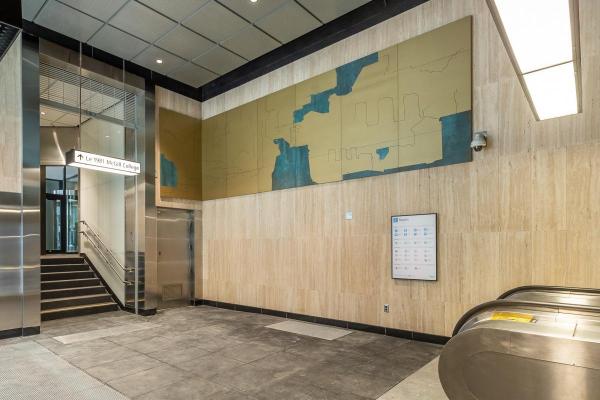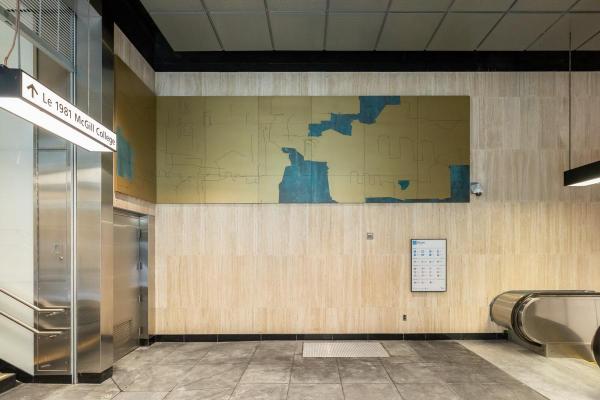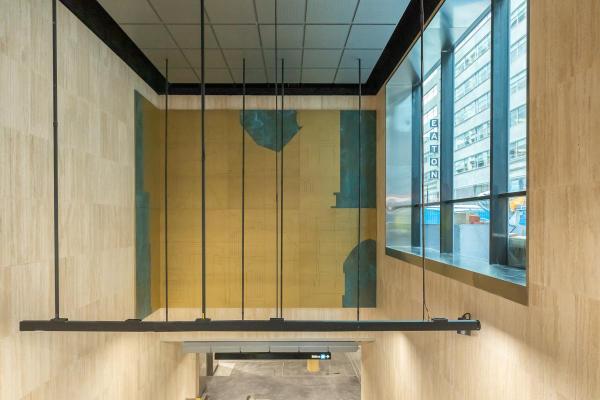Mathieu Lévesque
Vestiges (2023)
Painted aluminium
Programme d'intégration des arts à l'architecture du gouvernement du Québec
Location: entrances at 811, boulevard De Maisonneuve Ouest
This three-part pictorial work commemorates the architectural heritage of the Golden Square Mile neighborhood, where the metro station is located. The fine lines engraved in the surface represent architectural fragments modeled and traced from photographic archives and engravings documenting buildings in the area, almost all of which have disappeared.
Did you know?
This work draws its inspiration from two engravings (19th century) by John H. MacNaughton: the first was found by chance in the trash by the artist, and the second depicts James McGill’s former summer home, Burnside Place, at the foot of Mount Royal.
About the artist
Born in Sept-Iles in 1977, Mathieu Lévesque graduated from Université du Québec à Montréal (UQAM) in visual and media arts (M.A. and B.A.) in addition to having studied art history. His artistic approach is inspired by the elementary constituents of painting and sculpture, the limits of the works, and the correspondences between art and architecture.


Since the 19th century, the area where McGill station is located today has been known as the Golden Square Mile, which was home to the beautiful residences of the English-speaking elite. By 1900, 70% of all the wealth in Canada belonged to the entrepreneurs who lived there, most of whom came from Scotland.
The artwork at McGill station is made up of layers and webs of fine lines etched into the surface, depicting architectural fragments drawn from photographic archives and engravings that documented the buildings of the Golden Square Mile, almost all of which have disappeared.
Among these mansions and estates, some of the work’s fragments come from two residences that were once owned by James McGill. Other lines were drawn from the homes of philanthropists Louis-Joseph Forget, Frédéric-Alfred Lallemand and William Cornelius Van Horne, a well as from other buildings that were emblematic of the neighbourhood.
The artwork uses complementary colours to evoke Montréal’s identity, which is diverse but often marked by duality. While the gold can be tied to the Golden Square Mile’s upper class, the blue of the faux bronze is reminiscent of the Quebec and Scottish flags.
The three paintings were made so that the viewer can instinctively decode the architectural characteristics of the shapes, without being able to identify them at first glance. By taking the time to observe the work gradually, day after day, métro travellers are then able to make sense of it.
